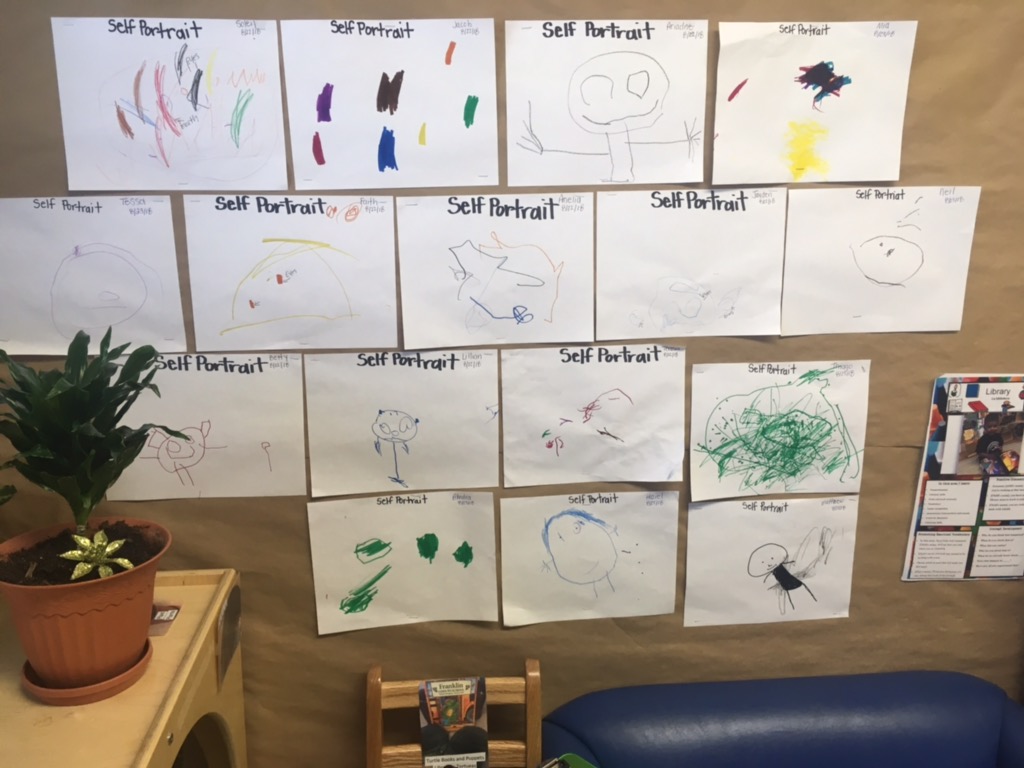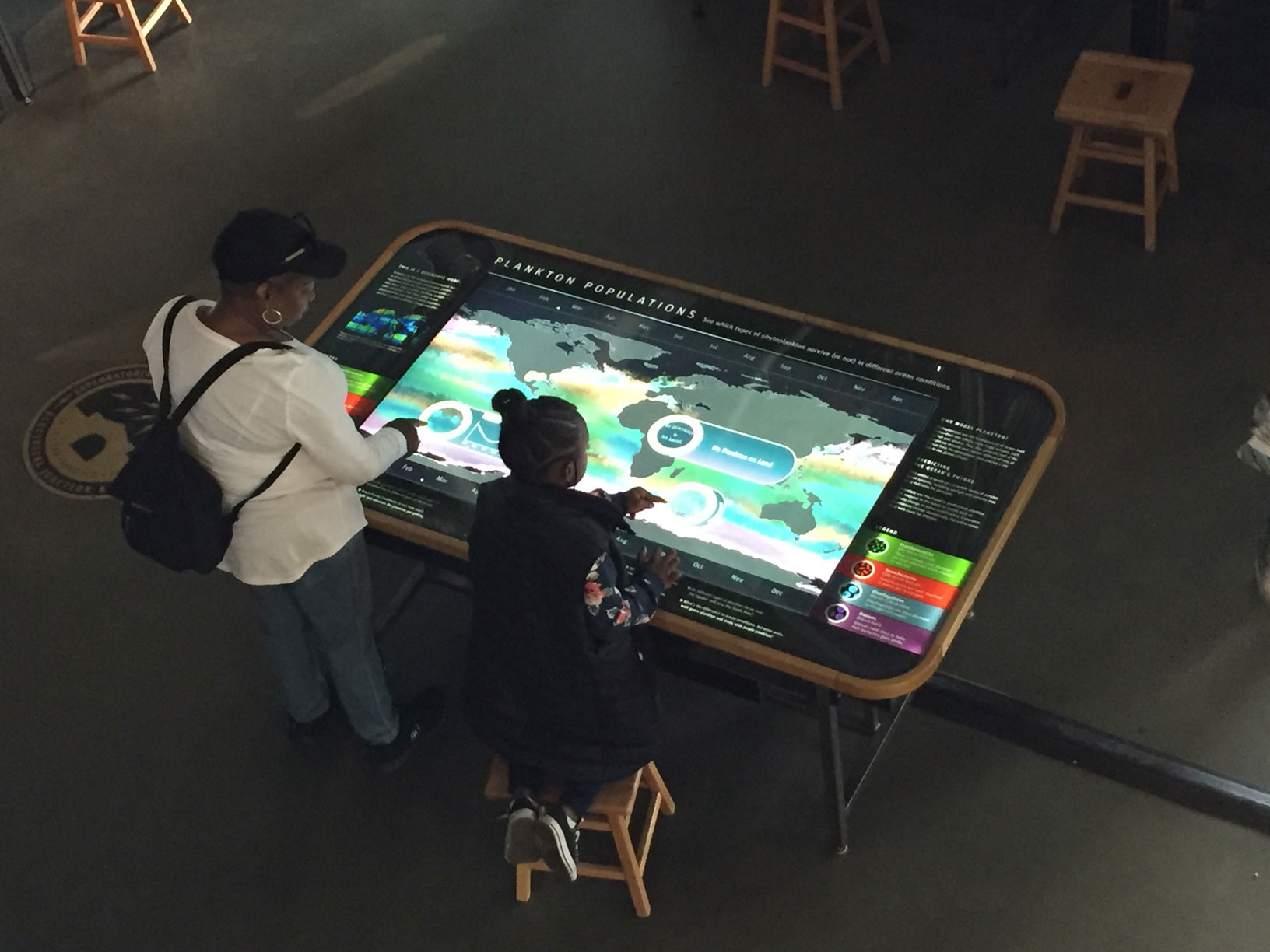OVERVIEW
Teach Kids about
Ocean Conservation
School of Fish is dedicated to educating children about marine life through exploration and play. Children can explore the sea with animal cartoon characters, interactive games, and educational activities. My goal is to apply UX principles to bring the project to the beta version.
Role
UX Researcher
Team
Tiffany Chan
Justice Hinojosa
Process
Research
BACKGROUND

Young & Hungry Creative (Y&H) is a student-run advertising agency giving students opportunities to work on real client-based projects. One of our clients is Blue Endeavors, an ocean conservation company that specializes in educating people on how to make a positive impact on the ocean. They offer diving certification classes and high school diving programs. Now Blue Endeavors is working with Y&H to develop an application for children.
RESEARCH GOALS
the Right Age Group
Previously, the brief was to design the app for kids aged 2-8. Considering that 2-year-olds only know about 50~75 words but 8-year-olds can code now, our team decided to narrow the age range to 2 years like the App Store that has three age categories for children's apps: under 5, 6-8 and 9-11.
So one of our goals was to find the target audience who are interested in exploring the ocean and who might become the potential customers of Blue Endeavors. Another goal was to decide on which features we would be designing for the target audience.

METHODS
Observe and Interview
Our approach was to observe kids first and then validate the insights by interviewing teachers and parents.
INITIAL RESEARCH
Kids Under 4
After conducting online research, we excluded kids who are younger than four years old because their cognitive development starts and their thinking is still based on intuition. The next step was to figure out which age group is more likely to be our primary target audience: preschoolers or 1st and 2nd graders.
INTERVIEW W/ EDUCATORS
4-to 6-year-olds
Having professional educators on board can add credibility to our app. We interviewed two education specialists, one is Linda Wong, a school psychologist who has relevant work experience in both preschools and elementary schools, and the other is a teacher of the preschool: Lighthouse. Interview Detail.
-
Insight 1: Learn through Physical Activities
From the interviews, teachers told us kids learned through games such as role play, singing, dancing, tag game, etc. Besides, most kids interacted nature by outdoor activities and hands-on experience that involves nature material, like rocks, leaves, and sands. We learned that schools and teachers encourage kids at this age to explore the world through physical activities.

-
Insight 2
Based on the picture of writing names and self-portraits that are very abstract. They drew their names rather than writing it; some kids pictured themselves as four colorful dots in their selfie-portrait.

-
Conclusion
If we say that kids under 4 live in their imaginations, preschoolers are slowly building bridges that connect their intuition to the real world. So we have to admit that kids from 4-6 are adorable, but they are not our primary target audience.
CONTEXTUAL INQUIRY
6-to 9-year-olds
To validate if kids at this age have an awareness of ocean conservation, we went to Charlie’s Corner which is a children's bookstore located in San Francisco. It hosts a weekly book club for 6-9-year-olds.
The three books below were recommended as the most popular amongst this age group. The illustrations in the books are artsy and detailed. Additionally, the content is poetic and not childish at all. Surprisingly, we found that kids there could not only understand the material but also were able to discuss the meaning behind it.

TARGET AUDIENCE
Primary Target Audience
6-to 9-year-olds who have interests in exploring the ocean
Secondary Target Audience
Parents who have kids who are 6-to 9-year-olds

OBSERVATION
What Do Kids Do?
The best way to get to find the behavior pattern of kids is through observation, so our team went to the Exploratorium, which is the museum of science and human perception in San Francisco. There we watched how kids interacted with science.
-
Insight 1: Short Attention Spans
On average, most kids didn't stay at one station for more than two minutes. They always switched among stations. As a result, we designed the duration of each task or activity to last no more than 2 minutes.
-
Insight 2: Interaction Helps Kids Focus
Unlike the other stations, the explainer stations have teen volunteers who demonstrate higher level scientific experiments. The day our team went, a high school explainer was demonstrating a cow-eye dissection. The kids were engaged in the dissection. They actively interacted with the volunteers and asked deeper level questions. We learned that kids could focus more through interaction, so we thought about designing the feature: Fun Facts and Story, in a "conversational" way and always visual cues, feedback and voice instructions.

-
Insight 3: Bigger Screen
We, as adults, usually use one or two fingers to interact with digital board or devices. However, some kids use more than two fingers or hands to touch the screen. They interacted smoothly with the table because the touchscreen is big enough. Because some younger kids haven't developed their motor skill so we should also consider designing for tablet and in horizontal view.

INTERVIEW W/ PARENTS
What Do Parents Want?
Because parents are the ones who pay for the product, so we also interviewed a father of two: Alexander Troy. Alexander has two boys, one is six years old, and another one is nine years old. He said that“I would like to download or purchase an app for my kids only if I know I can trust it". So we could design a parent mode that gives parents the control of app and we would avoid having outbound links that trigger a browser.
CONCLESION
Design Principles
Design for both tablet and phone
Both kids and parents are our target audience
The app should be exciting but not addictive
Always have visual cues, feedback and voice instructions
Outbound links that trigger a browser should be avoided or gated
Lo-fi

INFORMATION ARCHITECTURE

Final design
MVP


More Features On Roadmap

REFLECTION
The three most important things I learned from this project are: 1) how to sell an idea, 2) how to work with an advertising team and 3) how to execute an idea with a limited budget and on time. Besides the target audience, I also kept the team and client in mind. I explained to them the purposes of each step of our design process to have everyone on the same page so that we could get the best results. Besides, I also kept the web development and how much it will cost in mind while designing the project. This experience has helped me have a deeper understanding of how to develop a real product.



